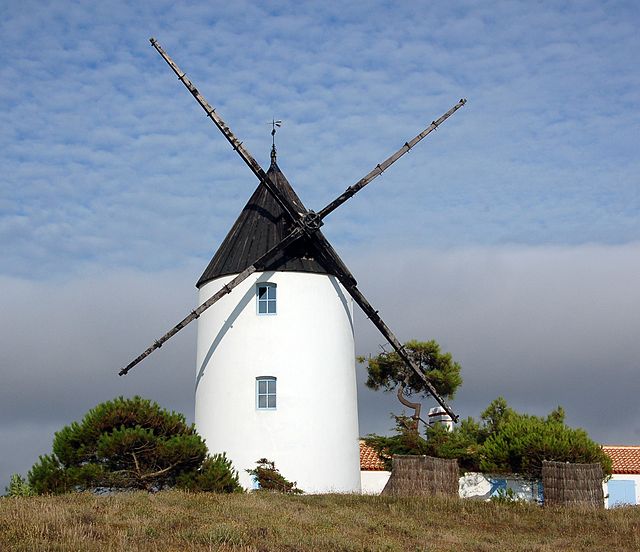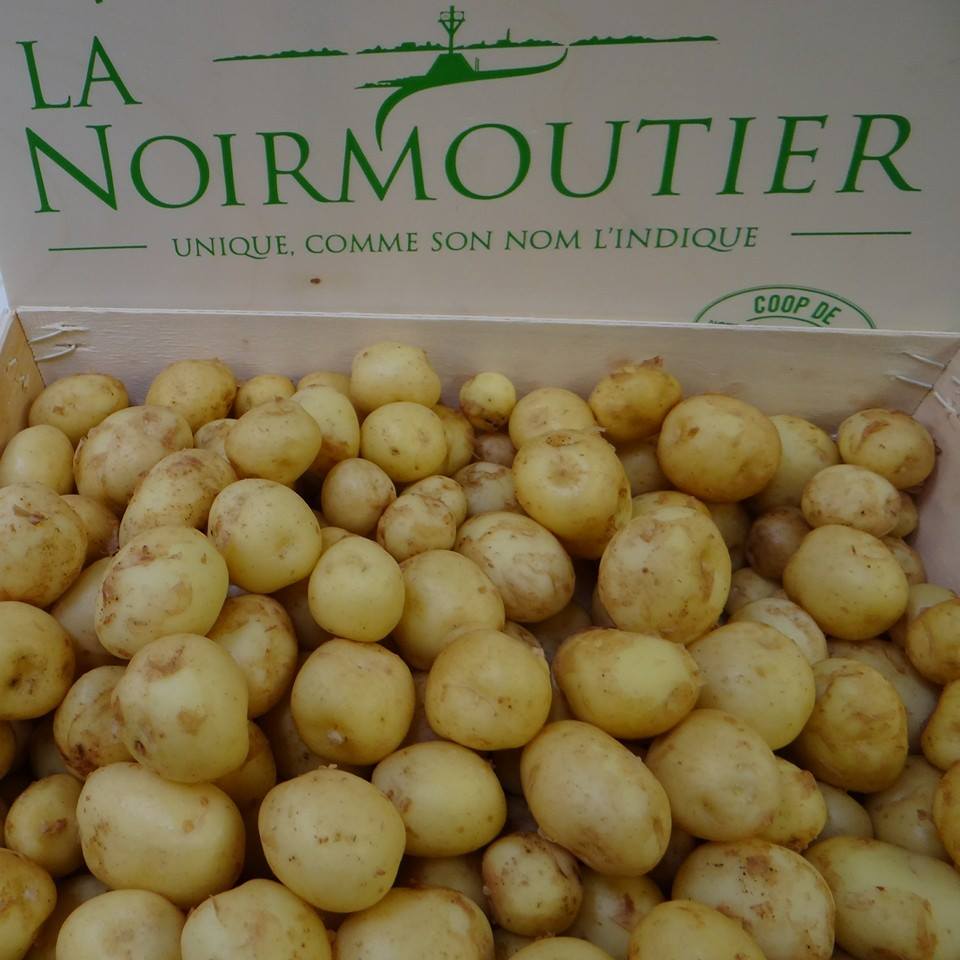by Paige Donner
Every year in France, when a certain season sets in, namely the Fall, a whole cadre of culinary enthusiasts await with bated breath their chance to devour cèpes and truffles and other richly aromatic tubers and funghi.

And while I enjoy these produits de terroir immensely, it is in May when this same sort of culinary fever washes over me in anticipation of the first tastes of the little yellow diamond, harvested by hand only, called La Bonnotte.
La Bonnotte, for those of you not familiar with it, is a little yellow gem that grows on the small, sheltered Isle of Noirmoutier in France’s northwest region of the Vendée. And while myself and other culinary gourmands can easily mistake this little tuber for the Royal Star of Paris diamond, it is, in fact, entirely edible. Yes, this little tuber is a potato.

But this little tuber isn’t like other little potatoes. Its taste, its consistency, its peak ripeness which lasts but a week, 10 days maximum, is highly prized and when brought to market is sold at Paris’ high-end art auction house, Drouot, in a partnership with luxury fine foods company, Petrossian, known primarily for their caviar.
And this brings us to the absolute perfect pairing for La Bonnotte, the little yellow hand-harvested potato grown exclusively on L’Ile de Noirmoutier: caviar.
La Bonnotte and Caviar
It is said that the only diet Jaccqueline Kennedy Onassis ever put herself on was a caviar-and-potato- once-a-day diet. I have not yet found a specific reference to the potato she used to frame her caviar, but I imagine it could very well have been La Bonnotte.
The first time I had the gastronomic privilege of tasting one of these treasures was at a reception held by LVMH. It was years ago and had something to do with fashion. Therefore, in a gesture of feeding a room full of beautiful people who don’t eat, it struck me as genius that they would serve a tiny little potato garnished with a dollop of fine black caviar, complemented with a touch of fresh Normandy clotted cream on top. Trust me. You have never had a mouthful of finger food so good.
Certainly, a company like LVMH can afford to serve guests the world’s most expensive potato. Coming in at around €500 per kilo, it often outranks even truffles in terms of price category. But for the unitiated eye, all attention was paid to the caviar. An irony, when, in fact, it was La Bonnotte which reigned supreme in the culinary hierarchy there with that caviar pairing.
What is the magic of La Bonnotte and what makes it so expensive?
Firstly, the Bonnotte is a Garden Potato. It demands as much attention from the grower as does a flower from a gardener. I’ve already mentioned two of its other hot-house qualities, namely that it must be hand-harvested and that it grows in a very particular soil, richly fertilized with wrack, whose mineral richness is found exclusively in this particular composition on the micro-climate, sunny northern part of the picturesque Ile de Noirmoutier. It is planted on February 2nd (France’s Candlemas Day) and precisily 90 days later it is in peak condition, taste-wise, and ready for harvesting.
A Brief History of La Bonnotte
The Bonnotte enjoyed an early success and is even credited with helping to build the reputation of The Isle of Noirmoutier. While its exact origins remains a debate between credit going to the Conquistadors who brought this little potato back from the Incas, to a Norman planter endowed with particular potato cultivating savoir-faire, it is generally accepted that in the 20’s or 30’s of the last century, a grower brought back to his island a particular potato from the Barfleur region on the English Channel. The growing conditions, with its briny sea-salt air and rich soils fertilized with wrack, proved exceptional for La Bonnotte and the little potato was crowned supreme by the French agricultural classification, DIEHL in 1938.
This is their description of La Bonnotte:
DIEHL – Its tubers have smooth, yellow skin and dark yellow flesh, finely grained. They are round, and the eyes are semi-sunken. The plant is sizeable and upright with a pigmented stalk and fairly short leaves, marked with a very glossy dark green. The leaflets have an embossed aspect. The flowers are small and white, and the fruits are reddish. It is resistant to potato wart and also, it seems, to degeneration disease. Its period of dormancy is quite long and it is also fairly slow to sprout – a delay it catches up on later.
Mechanization Meant No More
But when mechanization came to the island in the 60’s, La Bonnotte suffered. Its low yield of 100g to 200g per foot meant that farmers could not make a decent return and with their conversion from handpicking to mechanization, other tuber varieties won out. This is why it disappeared altogether from the market by around 1965.
However, because Ile de Noirmoutier had become so famous from its Early Potato variety of La Bonnotte, a group of farmers were determined to resuscitate it. In the ’90s, the Agricultural Co-Operative of the Isle of Noirmoutier went to the INRA (French National Institute of Agricultural Research) in Brest and asked them to regenerate exact copies of La Bonnotte. This replication was highly successful and yielded this little potato that is true in taste as well as form.
“Now part of the agricultural heritage, La Bonnotte is an undeniable element of the island’s identity.”
The farmers of The Isle of Noirmoutier harvest 11,000 tons of potatoes a year from an agricultural area of 380 hectares. But only a very small fraction of these are La Bonnotte. Other popular varieties are the Sirtéma, the Lady Christ’l, Charlotte and Jazzy varieties.
But it is La Bonnotte harvested only between May 1st and May 10th that is the best known product of these farmers here on Ile de Noirmoutier, along with the island’s farmed sea salt. The other Early Potatoes, a category to which La Bonnotte belongs, are harvested between late April and early August and are defined as a potato that is fluffy because of the fineness of its skin and because it’s harvested before it reaches maturity.
Where To Stay: Autre Mer, a 2-star Hotel just past the town center. It has that Nantucket feel with reasonable rates and a friendly owner-operator.
32 Avenue Joseph Pineau, Noirmoutier en L’Ile
Notable: The Bicyle Rental Shop, Cycles Charier, is just across the street. Bicycling is a must while visiting the island. It’s the primary method of transport.
The Isle of Noirmoutier Agricultural Co-Operative

Noirmoutier potatoes. A delight I took for granted as a child. Thank you for the interesting background. Ile de Noirmoutier is not in northern France, it’s bang on the west coast.
Nicole